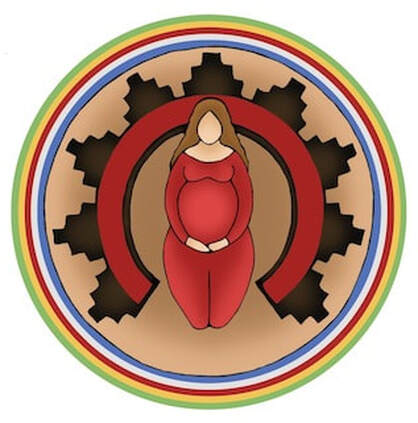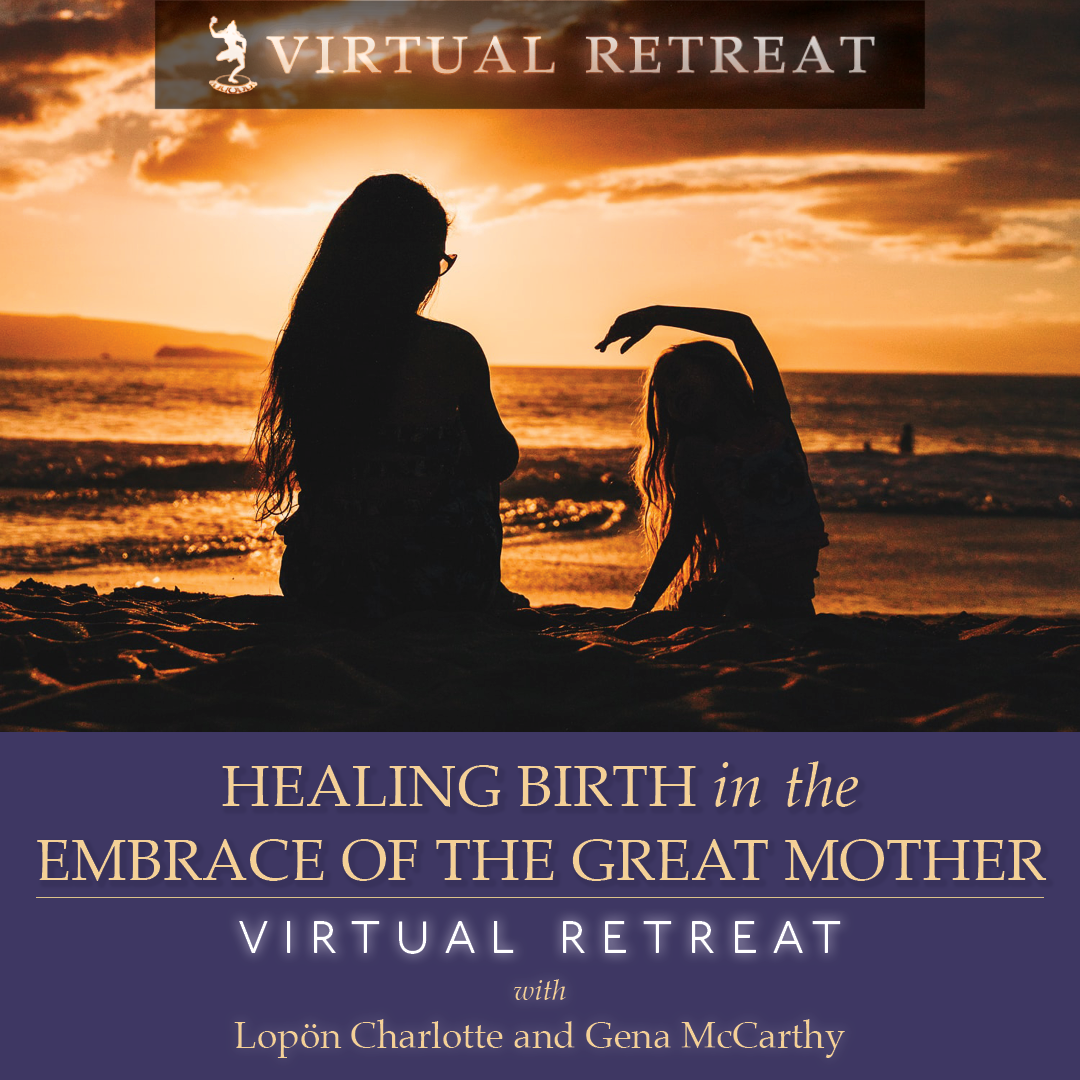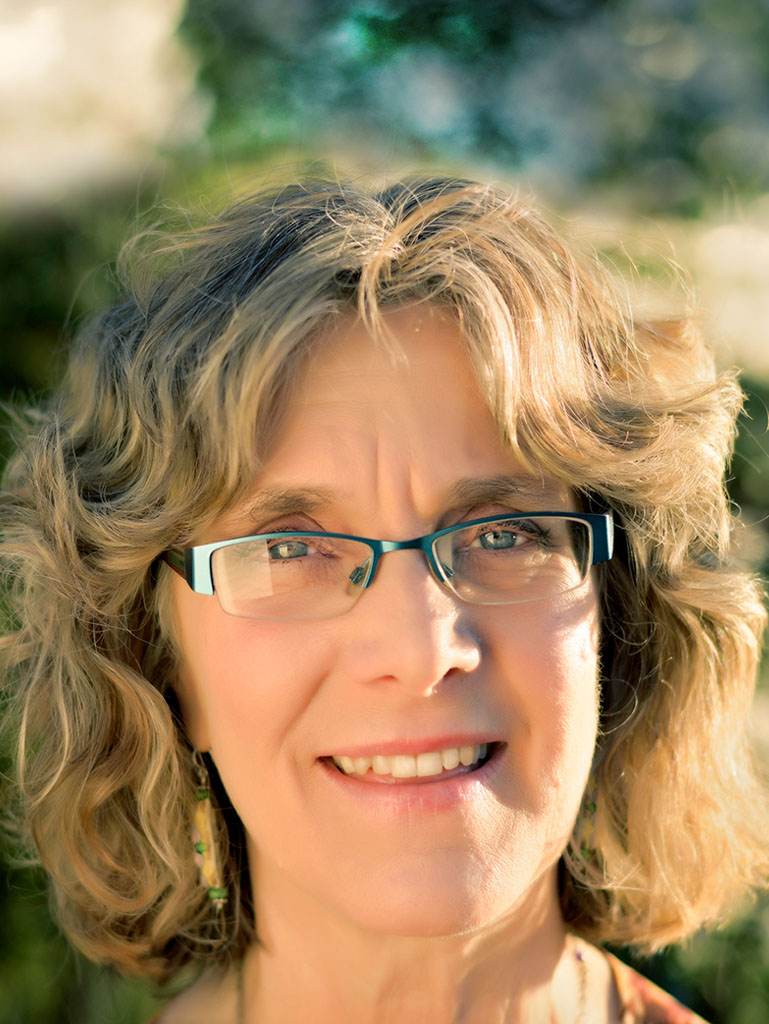In this article, Gena McCarthy RN, MFT shares how ceremony and safety facilitate a birth that is transformational and transcendent.
Gena McCarthy will be offering the daylong virtual retreat “Healing Birth in the Embrace of the Great Mother” (October 8), with Dorje Lopön Charlotte Rotterdam. To learn more and to register, click here »
When a woman gives birth, she travels to a liminal place between embodiment and timeless space and meets her baby. In all our original cultures, ceremonies and rituals were used to prepare pregnant parents and babies to feel safe and supported to take this journey and encounter the experiences of deep interconnectedness and vastness that arise within it
(Some, 1999) (Brown, 1997) (Arrien, 1993)
Entering the liminal space and time of birthing requires going beyond our ordinary ways of perceiving and being. In our modern technologically-oriented culture, with such an emphasis on being in control, these experiences can be perceived as threatening, frightening and overwhelming. Some women describe their experience in the following ways: “I thought I was going to die.” “I felt like I was losing control.” “I was going somewhere beyond what I knew.”
However, when women are prepared through ceremonies, meditation, yoga and other forms of relaxation that cultivate familiarity with the brain wave patterns and levels of consciousness encountered in birth, (Lipton, 2005) (Bardake, 2012), they know ahead of time that they will be going beyond what they know. They can cultivate relaxation and trust with these experiences. When women feel safe in birthing, they can let go to naturally arising feelings of wonder and deep interconnectedness. In this state, they can be flooded with endorphins and great pleasure. (Bardake, 2012)
As known in traditional cultures, the process of ceremony opens up many resources for those involved. Ceremonies offer us a way to connect in relationship and mutual support with the world inside and around us. They are a tried and true practice for effective, focused psychospiritual growth and transformation.
Ceremonies have an express intention, a specific declared purpose. Intention is an important aspect of psychospiritual growth. Studies have shown that holding a healing intention for oneself or for others has a powerful and proven effect. (Byrd, 1988) (McTaggert, 2007)
In her book Welcoming Spirit Home, Sobonfu Some offers examples of intentions typically used in the perinatal ceremonies of her Dagara tribe in Burkina Faso, Africa. Some of these include:
- Building and affirming self esteem, and worthiness to be a parent.
- Healing parents’ own history as babies, affecting their capacity to bond prenatally.
- Clearing obstacles and strengthening mutual appreciation in parents’ relationships.
- Clearing the womb of any sexual abuse trauma issues.
The Tibetan Art of Parenting by Anne Maiden Brown also describes a number of ceremonies specifically intended for the healing, support and growth of Tibetan parents during the perinatal times.
Another critical element of ceremony involves the attitudes held by the participant. Cross-cultural anthropologist Angeles Arrien, in her book The Four Fold Way, summarizes universal guidelines for useful and respectful ceremonial attitudes: Show up. Pay attention to what has heart and meaning. Tell the truth without blame or judgment. Let go of attachment and open to outcome. When we enter a ceremony with these attitudes, we are authentic, open, and vulnerable, trusting the mystery we are all a part of, however we each perceive that.
A state of feeling resourced and supported is established at the beginning of a ceremony. Depending upon the beliefs of those involved, some form of ceremonially calling in the support of loving wisdom energies, the elements, the ancestors, takes place.
During the ceremony, practices such as guided imagery, rattling or drumming support participants in accessing their inner worlds.
In that state our brain waves slow down from the more linear and focused state of Beta waves to the slower relaxed state of Alpha waves. Alpha waves allow us to be aware of our inner world and outer world at the same time. Simultaneously the alpha state gives us access to both our explicit and implicit memory. (Parnell, 2007) Then we are able to connect places in our unconscious and our limbic systems that may need attention.
New understandings are perceived and experienced. These inner experiences are perceived by the hippocampus as “real” and therefore felt in the body as somatic resources. (Lipton, 2005) For example, at a Parent ceremony, a couple brought objects which symbolized for them their worthiness to be parents. The Father, who was adopted, brought a walking stick. When he was a little boy his adopted grandfather had found the stick while on a walk with him and gave it to him, with the words, “sometimes people throw away valuable things”. Here the grandfather validated the boy’s value and worthiness, as the boy had been “cast aside” by his biological parents. This made a deep imprint upon him as a boy. Now, as a man becoming a father, it affirmed his inherent worthiness to do so. Through sharing this story in community in a deeply relaxed, authentic state, the father’s worthiness and connection with the support of his grandfather was being affirmed somatically in his body. It was also affirmed in our respectful and caring witnessing of his experience.
Parent ceremonies use all our resources to support each other in welcoming our babies, and ourselves as parents with love, presence and a deep knowing of all of our interconnectedness.
To learn more about facilitated parent ceremonies and facilitator certification programs, visit www.birthspiritualityandhealing.com
(Arrien, Angeles, The Four Fold Way, San Francisco, Califronia, Harper One, 1993)
(Brown, Anne Maiden, The Tibetan Art of Parenting, Boston, Massachussetts, Wisdom Publications, 1997)
(Lipton, Bruce, The Biology of Belief, Santa Rosa, California, Mountain Love/ Elite Books, 2005)
(Byrd, R. Positive Therapeutic effects of intecessory prayer in a coronary care unit, Southern Med J, 81-826-29, 1988)
(Mctaggert, Lynn, The Intention Experiment, New York, New York, Free Press, 2007)
(Parnell, Laurel, A Therapist’s Guide to EMDR, New York, New York, Norton, 2007)
Healing Birth in the Embrace of the Great Mother
With Magyu Dorje Lopön Charlotte Rotterdam and Gena McCarthy RN, MFT • October 8
Virtual Retreat
As mothers, grandmothers and meditators, our wisdom and voices are needed to honor our children and our births, to heal our relationships to our ancestors, and to dream a future for all. Through these teachings, meditations, sharings and ceremony we weave together a supportive and generative community that allows us to bring healing and transformation to some of our birth imprints … Read more »
Gena McCarthy
Gena McCarthy RN, MFT is an EMDR certified perinatal psychotherapist. She is the founder and developer of the Birth Spirituality and Healing Network, the Contra Costa County Perinatal Depression to Wellness Network and developed two local HMO Perinatal Integrative Health Programs. She co-founded the East Bay/ SF Peer Perinatal Professional Ceremony Circle. Gena is a long-time Tara Mandala sangha member. She has been trained in cross cultural shamanic, Buddhist, Cherokee peacekeeping practices and perinatal psychology.








